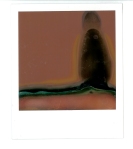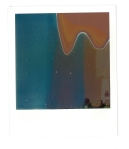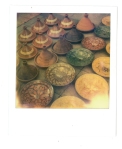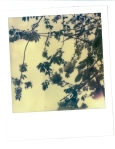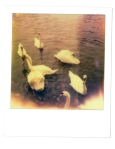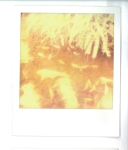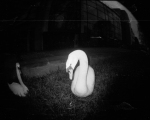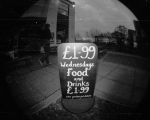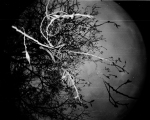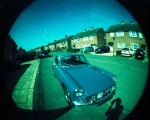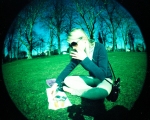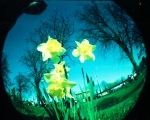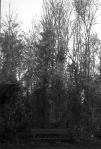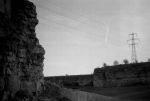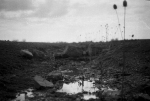An adaptation of the Walt Whitman poem of the same name. Created for a university project to show the understanding of narrative.
Shot on a Canon 7D with Sigma 30mm 1.4 and Canon 28-70 2.8 L USM.
The Impossible Project
I remember the first time I saw the film ‘Momento‘, it was about 5 years ago and it still remains one of the best films I’ve ever seen. One of the main things I absolutely love about the film is the Polaroids he takes and recently I took it upon myself to try out some of my own instant photography.
Unfortunately Polaroid shut down their production of instant film. At this time companies like Fuji still produced a form of instant film but no one produced the classic, square format, white boarded Polaroids seen in Momento. Luckily a group of former polaroid enpolies started a company called ‘The Impossible Project‘ shortly after production ceased.
“In October 2008 The Impossible Project saved the last Polaroid production plant for integral instant film in Enschede (NL) and started to invent and produce totally new instant film materials for traditional Polaroid cameras. In 2010 Impossible saved analog instant photography from extinction by releasing various, brand new and unique instant films.
Impossible prevented more than 300.000.000 perfectly functioning Polaroid cameras from becoming obsolete, changing the world of photography and keeping variety, tangibility and analogue creativity and possibilites alive.”
Unlike Polaroid film, Impossible Project is still experimental. Polaroid spent years perfecting a chemistry that would let the user watch the picture ‘appear in front of their eyes’. Impossible Project, with only a year created a somewhat stable formula, however it requires shading immediately after being exposed and a constant tempreture to create a quality image. With this information I got my hands on an old Polaroid camera, a SX-70, notably the first camera to take the infamous square format Polaroid classics which are now synonymous with their name. At this moment in time ‘Impossible Project’ film is incredibly expensive – £20 for ten exposures. Due to this being a test I purchased expired and consequently cheaper film from a seller on Ebay. The first pack was a failure, this was mainly because the darkslide that I was using to shield the film was also blocking it from ejecting from the camera but I leant from this mistake and the second was a little more successful.
The results yielded some interesting images; it appears that the second pack had a tiny light leak in the bottom right and left corner but this added to the experimental nature of the images. The images that I shielded best were the images of the girl on the train and the Moroccan pottery. This shows that when correctly shielded the experimental film can give some realistic results.
Summer in the City
We’ve been lucky enough to get some beautiful weather here in Lincolnshire the past few days.
Here are a few images taken on the Konica C35 using Fuji Provia 100F Slide Film which I intended to cross process in C-41 Chemicals. Cross processing is the act of processing film through chemicals not intended for it, such as colour negative through E-6 chemicals or slide through C-41. Since you are processing a type of film with chemistry that it was never designed for the results are unpredictable and can give unexpected colours.
Konica C35 + Expired Film
I recently found an old Konica C35 in a local charity shop for £3, working perfectly. I was also given some 35mm film that had expired in 2001 by the local photo lab where I work. When shooting on expired film I expected unpredictable results, so i was excited to see what will come out. The first half of exposures where taken at Lincoln Quarry on the day that I talked about in this post, but I found my focus more on the Rape fields that surround it. I later finished the roll on a walk around Lincoln on a unexpected sunny day.
Unfortunately, during processing the film was scratched but I didn’t edit them out because I felt that it added to the expired lo-fi feel of the images.
These images were scanned at 3600 dpi on a Plustek Opticfilm 7200.
Lomo Fisheye
I was introduced to film photography via lomography, a style of photography invented by the Lomographic Society. The founders first experimented with the Lomo LC-A, a cheap Russian toy camera. They were taken by the unique, high contrast photos with vignettes and soft focus. Since then several cameras such as Holga, Diana, Fisheye, Colorsplash and Supersampler have taken the name and style of Lomography.
Lomography is not only a photographic movement but also a why of life, and with this life style there are rules:-
1. Take your camera everywhere you go.
2. Use it any time – day and night.
3. Lomography is not an interference in your life, but a part of it.
4. Try to shoot from the hip.
5. Approach the objects of your Lomographic desire as close as possible.
6. Don’t think.
7. Be fast.
8. You don’t have to know beforehand what you captured on film.
9. Afterwards either.
10. Don’t worry about any rules!
So recently I borrowed a Lomo Fisheye off a friend and tried out some of my own Lomography. The first roll i put through the camera was some Illford HP5+, developed in Kodak T-Max Professional (1-4) for 6.30 minutes at 20°. Most of these photo where shot at night using the built-in flash.
The second roll was Fuji Provia 100F Slide Film which I intended to cross process in C-41 Chemicals. Cross processing is the act of processing film through chemicals not intended for it. Such as colour negative through E-6 chemicals or slide through C-41. Since you are processing a type of film with chemistry that it was never designed for the results are unpredictable and can give unexpected colours.
Mamiya MSX 500 and HP5+
A couple of days ago I loaded a Mamiya MSX 500 with Illford HP5+ film and went for a walk to Lincoln quarry.
This was the first time that i had attempted to develop film at home using my Paterson developing tank.
The HP5+ was developed in Kodak T-Max Professional (1-4) for 6.30 minutes at 20°. Then scanned at 3600 dpi on a Plustek Opticfilm 7200.
When scanning I noticed heavy starching and chemical marks, this is due to the lack of wetting agent and careless handling of the film.
Other than that my first attempt at home processing was a success.

